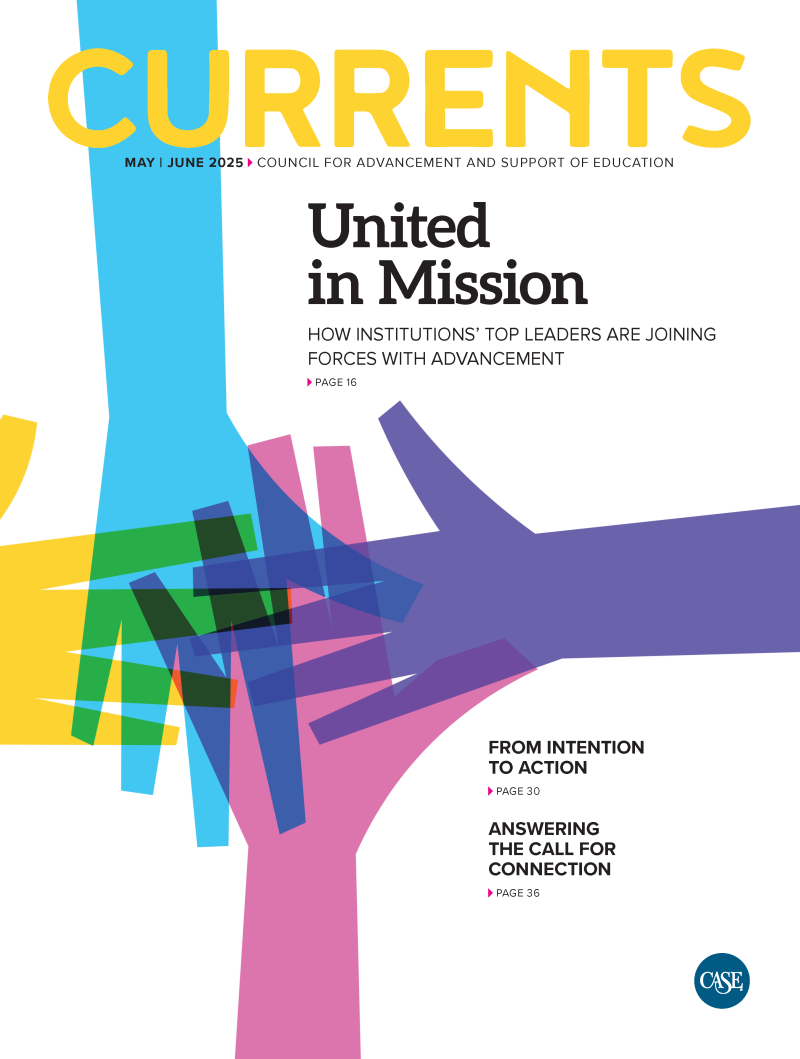Talking Shop: Resilient Teams Show Up, Fail, Learn, and Repeat

JHUMAR JOHNSON
Chief of Staff to the Chief Commercial Officer, Global University Systems
Former Chief of Staff to the Vice Chancellor and Director of Development, The Open University, Milton Keynes, England
Leading advancement teams today, amid change and hefty expectations, is like “constantly being in quicksand,” says Jhumar Johnson. That’s why cultivating resilience is crucial.
Here, Johnson— who spent 11 years at the U.K.’s Open University—shares how resilience is built on consistency and trust, but also failure and joy.
What characterizes a resilient team?
Resilience is a big challenge. Keeping yourself and your teams focused, motivated, adaptable, flexible, happy, and performing—it’s quite a difficult space to be in.
There are a few things that go into resilience. First, make accepting failure the norm, not the exception. From a leadership perspective, you have to think about how you create safe spaces for individuals to come back and say, “I got a rejection.” Rejections [in our work] aren’t personal—they’re organizational, or project-related; there are many reasons funders or alumni can say no to things. How do we come back and say that something didn’t work out? How do we help each other recognize and regulate those emotions, and bounce back? If your team doesn’t have that sense of psychological safety, it’s difficult to do anything else from there.
We have to create and hold a learning space in the doing of our roles. Make the time to ask what worked well and what didn’t, what was in our control and what wasn’t, and what we could do differently next time.
This links to valuing diversity of thought and experience. In higher education, we love our hierarchy. But if you’re going to be committed to learning and valuing diverse perspectives, then you have to throw hierarchy out of the window and think about problems collectively and creatively.
How can a leader build resilience?
I won’t use the word “authenticity;” it’s overused. But a lot of this is about consistently showing up. When I started at The Open University, one of my early assessments was that the team lacked consistency. Promises were being made and not kept; directions were set but not followed.
When I say I’m going to do something, I follow through. Every day that I turn up, I’m predictable for the team and the processes we set in place. That has to be regularly modeled, not just by me but everybody else in the leadership team, and that takes time. You have to be consistent, patient, and kind to build trust, which is the cornerstone for bouncing back.
Now, the fact that we’ve built an incredibly solid team, that we grow our own, that in our surveys the team is posting results of being the happiest, the least stressed, the most motivated, the most connected—those are the markers of what we’ve been able to change.
How does remote or hybrid work impact team-building?
During the pandemic we prioritized social time with each other because welfare and mental health were top of mind. As soon as we went back, all of that got lost, somewhat. But how do we have fun and bring joy?
I often talk about joy with my teams and I occasionally get raised eyebrows from them. But joy is the glue that holds teams together—lightheartedness, connections with each other that are not about the work we’re transacting.
The fact is, the work will get done. On the whole, the majority of people have a real sense of responsibility and I trust them. So, my job really becomes much more about how they’re feeling coming to work. Do they wake up and think, “Yes!” or go, “Another day of drudgery.” We should think about a well-being mindset, the way we did during the pandemic. That may involve intentionally creating times to meet to get to know each other personally. When we do our unit meetings, there’s always an element of fun attached to them—like a silly game or exercise—and we’ll have a good laugh.
About the author(s)
Meredith Barnett is the Managing Editor at CASE.
Tags
Article appears in:

Currents - May/June 2025
UNITED IN MISSION: How institutions’ top leaders are joining forces with advancement.
Plus a checklist for building trust, moving from intention to action with gap analysis, answering the call for connection with alumni, and more.


